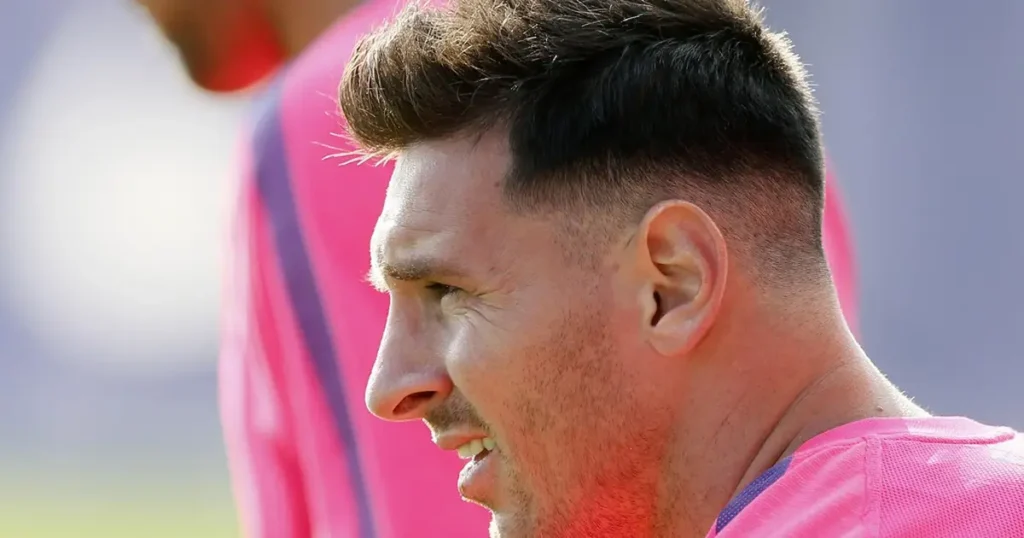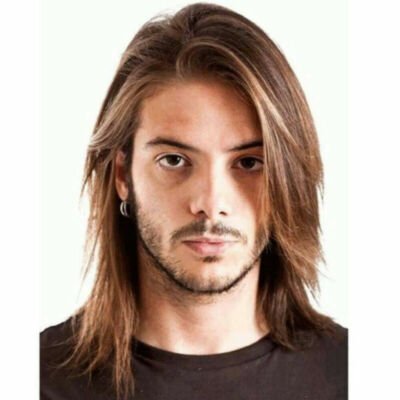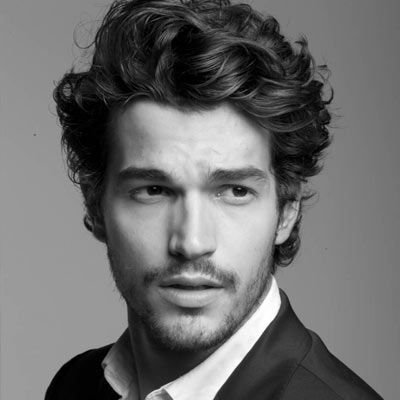The Edgar haircut has evolved from controversial trend to mainstream style statement in 2025, with celebrities and influencers adapting this once niche cut into versatile fashion. What began as a cultural staple in Latino communities has now crossed over into widespread popularity, adapting to different textures, preferences, and settings.
Many men interested in the Edgar cut struggle to find updated information on current trends, variations suited to their face shape, and professional styling techniques. Whether you’re considering your first Edgar or looking to update your current style, this comprehensive guide will walk you through everything you need to know about this iconic haircut in 2025.
What Is an Edgar Haircut?
The Edgar haircut is characterized by a sharp, straight fringe across the forehead, faded sides, and a voluminous, often textured top. This distinctive style combines elements of a bowl cut with modern fade techniques to create a bold, structured look that frames the face.
The authentic Edgar features three essential elements:
- A straight-across fringe sitting just above the eyebrows
- A high-contrast fade on the sides and back
- A fuller crown providing contrast to the tight sides
Unlike a traditional bowl cut, the Edgar cut incorporates precise blending and clean lines that give it a more refined, intentional appearance.
Many people confuse the Edgar with similar styles like the Caesar cut, but the key difference lies in the fringe (straight and blunt on the Edgar versus textured and forward on the Caesar) and the contrast between top and sides, which is much more pronounced in the Edgar haircut.
Evolution of the Edgar Haircut in 2025
The Origin Story: From Mexican-American Culture to Global Trend
The Edgar haircut has deep roots in Mexican-American communities, particularly in border towns and urban centers across the southwestern United States. Originally popularized within the cholo and takuache haircut subcultures, the style was named after Mexican-American baseball player Edgar Martinez, though some debate this attribution.
By 2025, the Edgar has completed its journey from cultural statement to mainstream fashion. What began as a regionally specific style has evolved into a global phenomenon, with each cultural adaptation adding unique elements while maintaining the core aesthetic.
| Time Period | Edgar Haircut Characteristics | Cultural Context |
| 2010-2015 | Sharper lines, higher contrast fade, minimal texturing | Regional style in Latino communities |
| 2016-2020 | Softer edges, more varied fade heights, slight texturing | Early mainstream adoption, social media visibility |
| 2021-2023 | Increased top length, more textured styles, creative fade patterns | Celebrity adoption, TikTok popularity |
| 2024-2025 | Versatile variations, personalized adaptations, professional modifications | Global style, cross-cultural adaptations |
How the Edgar Haircut Has Changed (2020-2025)

The Edgar of 2025 bears resemblance to its earlier iterations but has evolved significantly. Today’s Edgar haircut emphasizes:
- Versatility and personalization for different face shapes
- Adaptability to various hair textures
- Modification options for professional environments
- Creative interpretations while maintaining core elements
Key evolutionary changes include softened fringe lines, increased texture work, more varied fade heights, and better adaptation to different hair types.
Current Edgar Haircut Trends & Variations
The Classic Edgar: Defining Elements and Modern Twists
The classic Edgar haircut remains the foundation upon which all variations are built. In 2025, the traditional Edgar features:
- A straight, clean fringe sitting just above the eyebrows
- Mid to high fade on the sides and back
- Sharp, defined lines around the temples
- Fuller top with minimal texturing
- Clean, straight sideburn lines
Modern twists include slightly textured fringe edges for a less severe look and precision skin fades rather than traditional tapers.
The Soft Edgar: Less Severe Options for Professional Settings
The soft Edgar haircut emerged as professionals sought ways to incorporate the style into corporate environments. This variation features:
- Slightly textured fringe with softened edges
- Lower contrast between top and sides
- Mid fade rather than high fade
- Minimal line work
This professional-friendly adaptation maintains the Edgar’s signature silhouette while reducing the stark contrasts that make the traditional version challenging for conservative workplaces.
The Fluffy Edgar Haircut: Increased Volume with Textured Top

The fluffy Edgar haircut has emerged as one of 2025’s standout trends, combining the structured base of the traditional Edgar with significantly increased volume on top.
| Feature | Description | Styling Technique |
| Top Length | 2-3 inches, layered | Point cutting, texturizing |
| Volume | High, cloud-like appearance | Blow-drying with round brush |
| Texture | Separated, piece-y definition | Texturizing paste or powder |
| Fringe | Straight but softly textured | Point cutting with slight elevation |
| Sides | Traditional Edgar fade | Standard fade technique |
This variation offers a playful yet structured option that works well for younger wearers or those in creative industries. The contrast between the precise edges and the free-flowing top creates a visually interesting silhouette.
For those looking for something between an Edgar and longer styles, the men’s wolf cut offers a great alternative with more length and texture while maintaining a clean fade on the sides.
Choosing the Right Edgar Haircut for Your Face and Lifestyle
Face Shape Analysis for Edgar Haircuts
The Edgar can be adapted to flatter different face shapes with strategic adjustments:
| Face Shape | Edgar Modification | Reasoning |
| Oval | Standard Edgar works well | Balanced proportions complement the structure |
| Round | Higher fade, more volume on top | Creates vertical lengthening effect |
| Square | Textured fringe, softer lines | Balances strong jaw features |
| Diamond | Wider fringe, medium fade | Adds width to narrow forehead |
| Oblong | Lower fade, fuller sides | Adds width to elongated face |
| Heart | Fuller fringe, gradual fade | Balances wider forehead with narrower chin |
The most important consideration is the fringe length and position, as this frames the face and can significantly impact how the Edgar haircut complements your features.
Hair Texture Considerations
Different hair textures require specific Edgar haircut adaptations:
For straight hair:

- Texturizing is essential for movement
- Product selection is crucial for maintaining shape
- More frequent trimming may be necessary
For wavy hair:

- Reduced texturizing may be needed
- Natural wave can enhance the fluffy variation
- Anti-humidity products help maintain the clean lines
For curly hair:

- Longer length on top accommodates shrinkage
- Modified fringe approach may be necessary
- Consider texture-specific styling products
If you’re looking for a style that incorporates fade techniques but want something less structured than the Edgar, consider checking out mullet fade haircuts which offer a modern take on the classic mullet with cleaner sides.
Step-by-Step Edgar Haircut Tutorial
Tools and Products You’ll Need
For the perfect Edgar haircut, professionals and home stylists should gather:
Essential tools:
- Professional clippers with multiple guard sizes
- Trimmer for clean lines and edges
- Cutting scissors and texturizing shears
- Fine-tooth and wide-tooth combs
- Mirror setup for back viewing
Products:
- Pre-styling primer or mousse
- Medium-hold styling product (pomade or clay)
- Finishing hairspray
- Line-up enhancement products
Creating the Perfect Edgar Haircut Base
Step-by-step guide:
- Start with the sides and back using appropriate guard size (typically #1 or #2 at the bottom)
- Create the fade gradually, working up through guard sizes
- Leave the top and fringe area untouched initially
- Define the height of the fade based on desired variation
- Blend the transition areas between fade and top
Styling and Maintaining Your Edgar Haircut
To keep your Edgar looking sharp:
- Schedule touch-ups every 2-3 weeks
- Use trimmers for light line maintenance at home
- Apply styling product daily to maintain shape
- Protect from excessive humidity and sweat
For the fluffy Edgar variation:
- Use volumizing shampoo and conditioner
- Apply lightweight texturizing products
- Blow-dry with a round brush for maximum volume
- Refresh with dry shampoo between washes
Common Edgar Haircut Problems and Solutions
| Problem | Solution |
| Fringe growing too quickly | Keep small scissors for touch-ups |
| Fade looking patchy | Visit barber for fade refreshes only |
| Product buildup | Use clarifying shampoo weekly |
| Flattening during day | Carry travel-size texture spray |
| Cowlicks disrupting shape | Ask barber for custom cutting techniques |
Conclusion
The Edgar haircut continues to demonstrate remarkable versatility and staying power in 2025, evolving from cultural statement to mainstream style choice. By understanding the variations available and how to personalize them to your features, you can confidently rock this distinctive look.
Whether you choose the classic Edgar, the professional-friendly soft variation, or the trendy fluffy Edgar haircut, proper maintenance and styling are key to making this iconic cut work for you.
Ready to transform your look? Find an Edgar haircut specialist near you today using our barber finder tool, or share your own Edgar journey with our community! Take the first step toward your perfect Edgar haircut by scheduling a consultation with a professional barber experienced in creating this distinctive style.
Frequently Asked Questions
How often should I get my Edgar haircut trimmed?
Get a trim every 2-3 weeks to keep your Edgar looking sharp. The short sides and clean lines grow out fast and need regular maintenance.
Can I style an Edgar without using products?
You need at least some product to keep the Edgar’s shape, especially for the fringe. For a natural look, use light-hold products that don’t feel stiff or heavy.
Is the Edgar good for work?
The “soft Edgar” works well in most jobs. It has a less dramatic fade, softer fringe, and cleaner look while still keeping the Edgar style. For very formal workplaces, ask your barber to make it even more subtle.
Will an Edgar work with my curly hair?
Yes! Curly hair can look great with an Edgar. Your barber will need to leave more length on top for the shrinkage and may need to customize the fringe. Curly Edgars often look more natural and textured.
How do I know if an Edgar will look good on me?
Edgars work for most face shapes with the right adjustments. Oval and square faces typically look best with standard Edgars. If you’re unsure, try the soft Edgar version first, which is less dramatic and flatters most people.
What’s the difference between an Edgar and a mullet fade?
The Edgar has a straight fringe across the forehead and even length on top, while a mullet fade keeps the hair longer in the back. Edgars focus on the front fringe, while mullets create contrast between short sides and a longer back section.
Can I combine an Edgar with other hairstyles?
Yes! Many guys mix Edgar elements with styles like the wolf cut for a hybrid look. Talk to your barber about creating a custom style that includes your favorite parts of the Edgar.

